Strathcona Cup 2023 - 2
On arrival in Toronto we looked forward to our first game, and this was to be at the intriguingly-named Toronto Cricket, Skating and Curling Club. We later learned that some of the city clubs’ names had morphed over time as they amalgamated or moved, and in many cases sold valuable land to real estate and rebuilt more compact or relocated facilities. Toronto Cricket was the first of a number of “country club” destinations that we visited, albeit this one in the city didn’t have a golf club attached. Nevertheless it was a high quality club with a posh locker room (we were allocated private lockers with a rotating combination lock like those seen on safes in films). All 5 of the Scottish teams played against local opposition. We had guests of honour watching the games at Toronto Cricket, joining us for dinner and speaking afterwards. These were 3 of Canada’s Wayne Middaugh team who are triple world champions. What an experience for our first matches.
The next day we took to our tour bus and headed west out of the city on the road to a series of small towns and cities in South Ontario. We were to get very familiar with our bus and with Martin, our usual driver (apart from a couple of his rest days). He was an excellent and professional driver, able to cope with all sorts of weather. What he made of our constant banter is anyone’s guess, assuming he understood the wide range of Scots dialects on board.
Here are two maps which show our schedule.
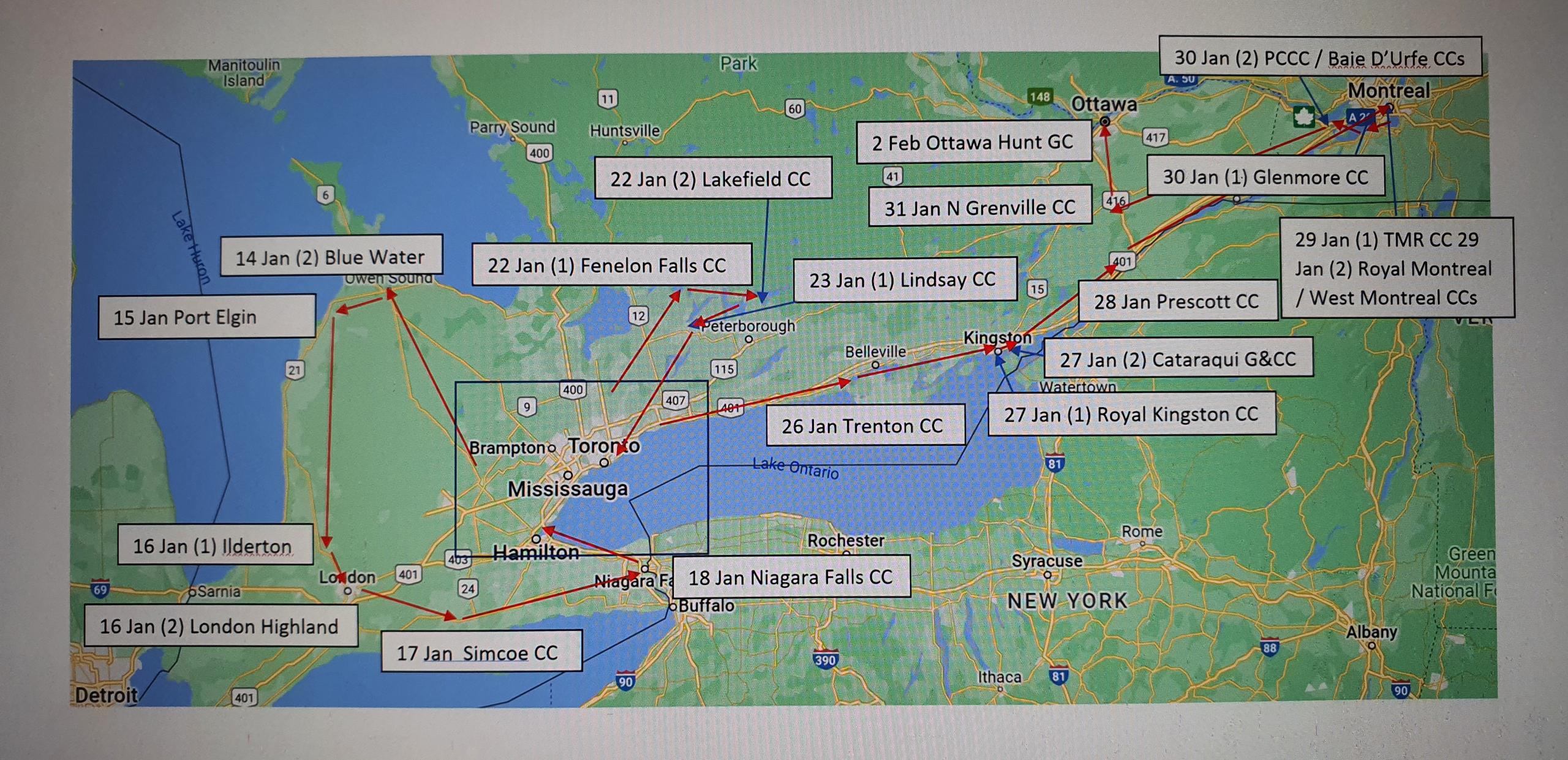
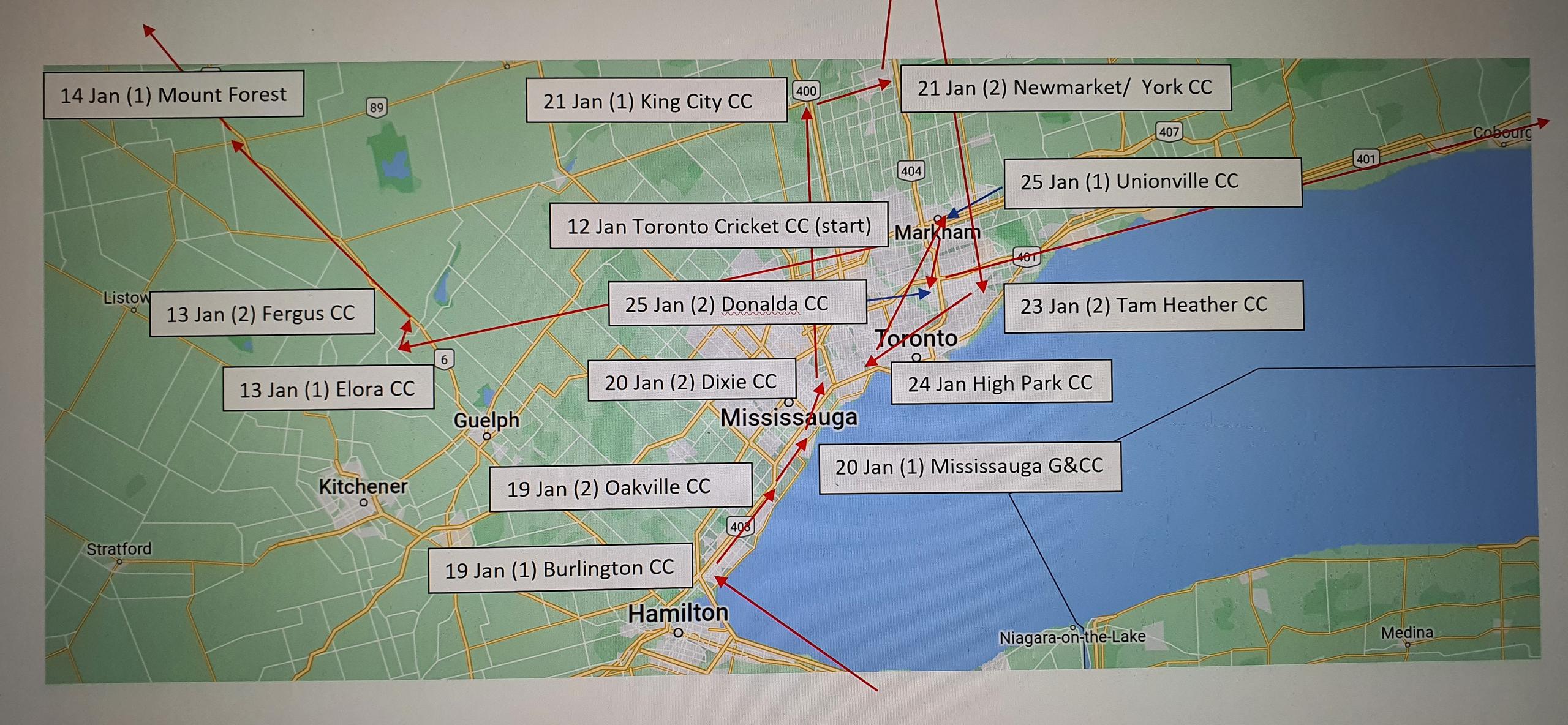
35 curling clubs, 22 days, 12 hotels, 2,700 bus-km.
The first two rural curling clubs at Elora and Fergus set the tone for small town curling clubs. Unlike Scotland where most curling facilities – with a couple of honourable exceptions – are city sports ice rinks to where a number of curling clubs travel to compete, the Canadian small town curling club is a community social centre which have an average of 100 members per lane membership. Out in the sticks we were of great interest. On arrival with our bus, as we disembarked invariably we were piped into the club by a local man or woman usually with a Scots lineage, and given a welcoming guard of honour by club members holding their brushes in an arch. Once changed we were again piped onto the ice and alongside our hosts/opposition we followed two flags, one Scottish saltire and one Canadian maple leaf. On many, but not all occasions we sang national anthems – Flower of Scotland and O Canada – often the first accompanied by the piper, and on one interesting occasion the latter too.
All games were 8 ends, and after 4 we stacked the brooms and had a dram with our opposition. The liquid provided varied between a Canadian rye whiskey and a Scots whisky. Whilst not being a connoisseur, I quickly learned the differences and must say I prefer a Speyside malt whisky.
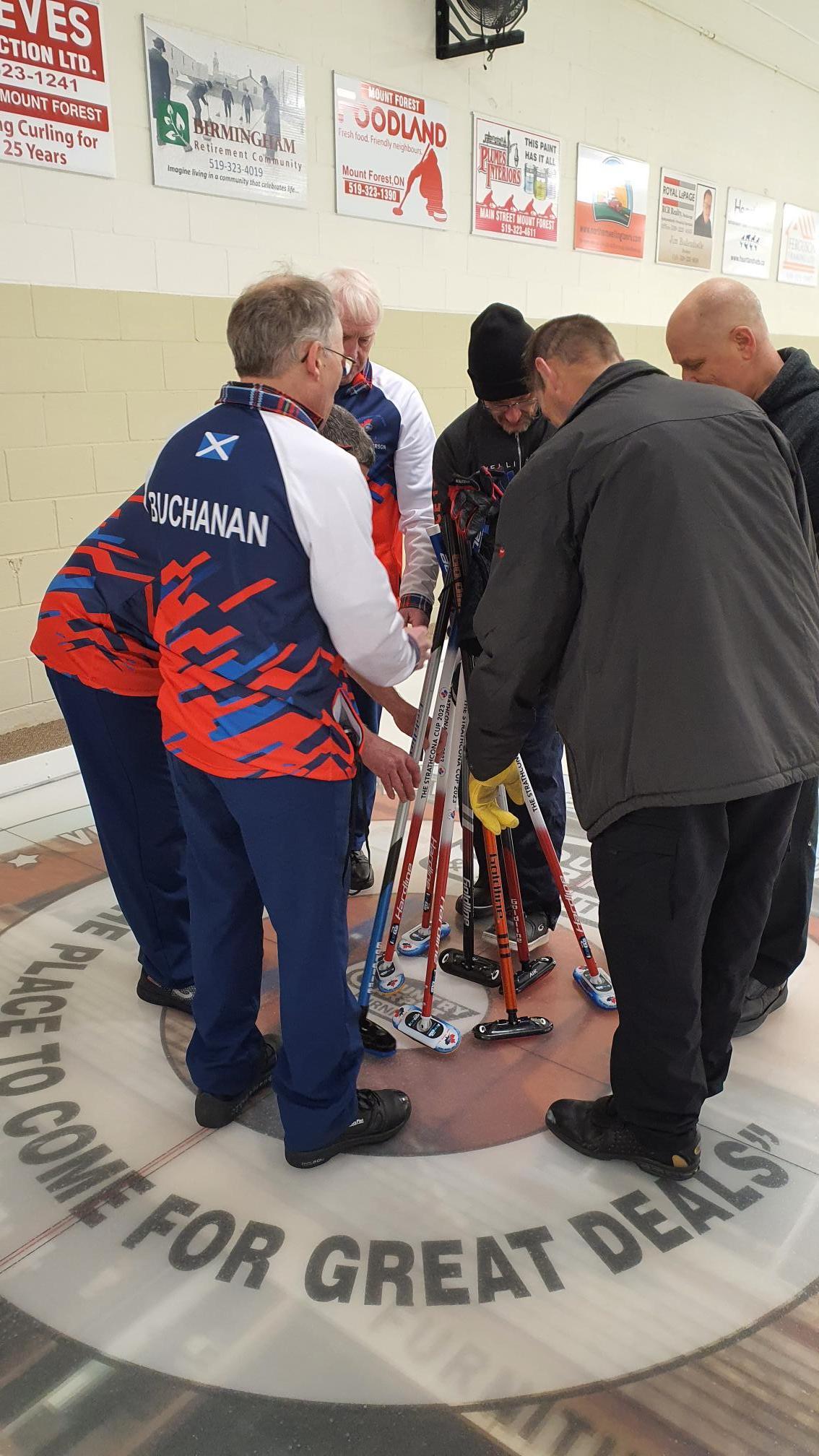
Broom-stacking
After the games finished we had a drink with our opposition and then a meal. For morning games a tasty and filling lunch, often soup and sandwiches, or following afternoon games a full knife and fork dinner. The tour organisers had coordinated menus from one club to the next and we were served a wide range of meals, with no immediate repeats from the previous day or two. New dishes tried were poutine (potato chips - fries, not crisps - with cheese, gravy and salt) and pickerel (a tasty white meat fish from the Great Lakes).
The one exception to dining in curling clubs was at York where we were home-hosted for dinner by one of our opponents, Chris Foss. His wife and her friends laid on a lovely beef stew, and the six Scottish curlers there made serious inroads into his stock of wine and whisky!
Many of the small clubs had 4 lanes in use, so with 5 touring teams we all took turns in being the resting team. This normally resulted in being treated to a tour of local places of interest, and over the three and a bit weeks in Canada I have toured three small breweries, two distilleries, at least four farms, a sawmill, a converted watermill hotel, a lakeside holiday cottage, some beauty spots, and had several walks around picturesque “historic” (in Canadian terms) towns. The hospitality of our hosts was always excellent. In the small towns we were big news and invariably the local mayor appeared to welcome us, sometimes the Provincial representative, and occasionally local media too. Top of the political pile we met was the Hon. Elizabeth Dowdeswell, the Lieutenant Governor of Ontario. A point I hadn’t quite grasped before is that to us the opposition were all Canadians, but underneath that they are quite tribal and see themselves as exiled Scots, Irish, English, German etc.
As well as the after-game drinks and meals, there were always speeches: the Club President, the mayor (etc.) and the local organiser. Whilst we heard the same facts about Lord Strathcona and the competition time and time again, it was always fresh to our hosts. In response to the welcome speeches we had a set routine; one of our curlers (we took turns) standing up and giving a vote of thanks. As well as that he did his party-piece, usually a joke, ditty, poem or similar. This was always followed by all 20 of the Scots curlers standing up as a choir and singing our tour song – a curling-themed-lyrics version of the Proclaimers’ “500 Miles”. A few clubs laid on an evening events and we were treated to live bands, dancing and late bars. Very often the hospitality extended to a free bar for the tourists, we really appreciate the organisation and fund raising that the host clubs put on for us, not a light undertaking.
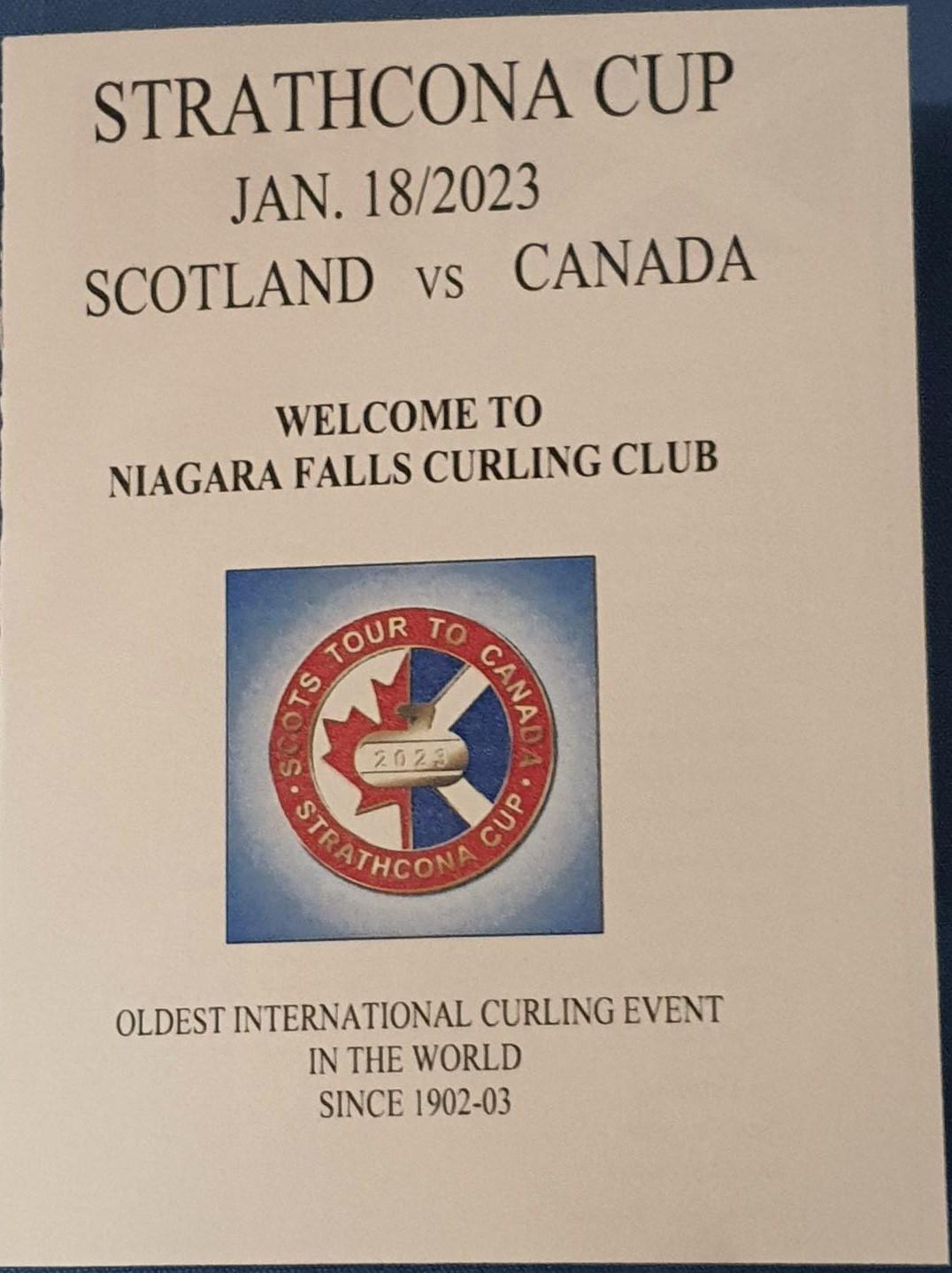
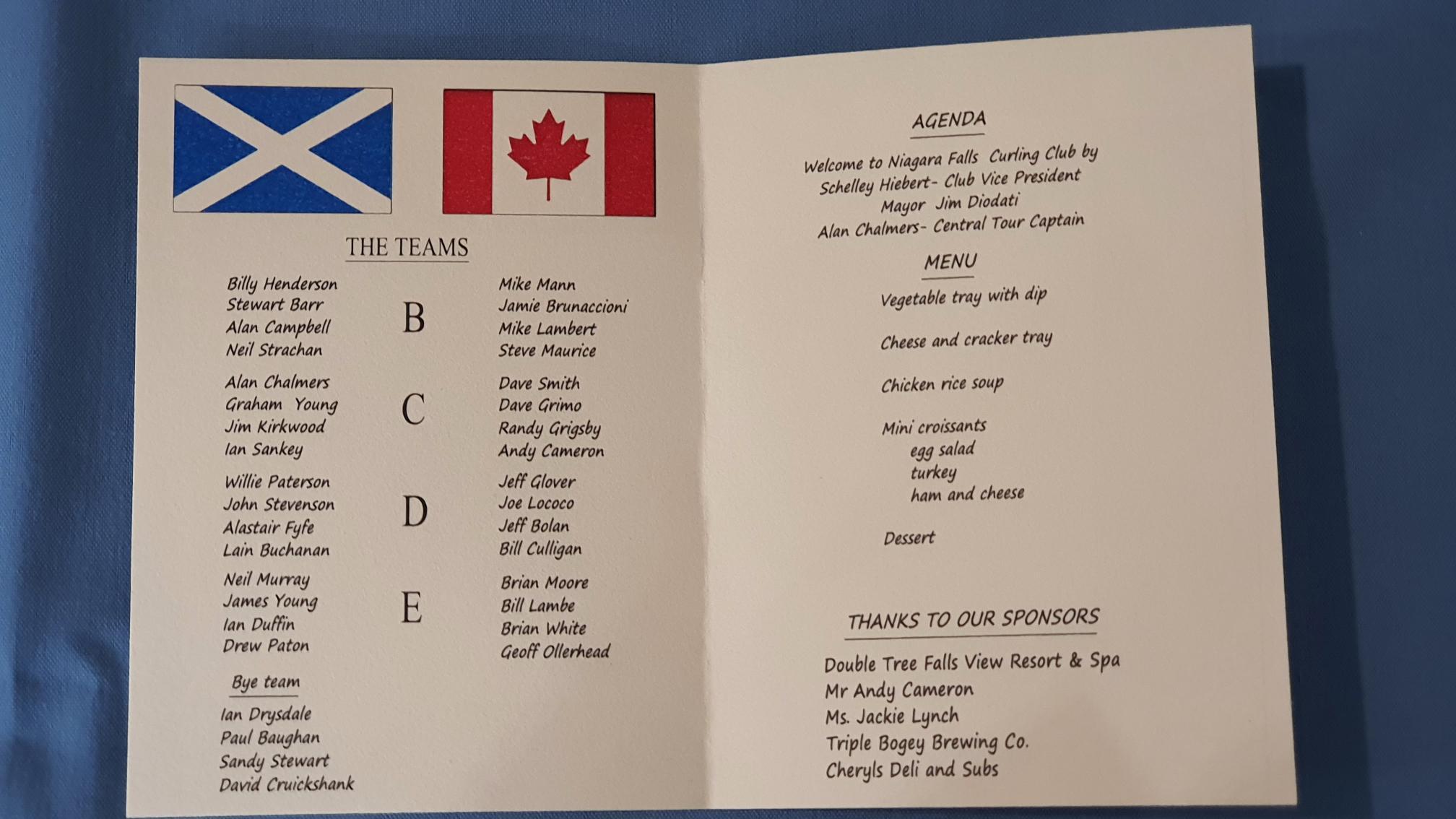
A typical club programme
One feature of the tour was the
daily “Morning Class”. This is a tradition of Strathcona Cup tours on both
sides of the Atlantic. It is a morning meet to sort out the day’s business, and
it starts off with a slug of a special mixture – on our tour it was based on gin
and orange. Occasionally these were held in hotel meeting rooms, usually to the
bemusement of the staff, but more commonly on the tour bus as we set off after yet another early breakfast. Another feature of Morning Class was the tour “Sheriff”
holding court and handing down fines for misdemeanours committed the previous
day. Some were well earned, others were spurious but entertaining, and there
were also fines for poor curling – hogging or burning stones, wrong calls or
bad misses. We all contributed to the fines stoup and the proceeds went
to any immediate costs, gin top-ups and of course to the Doddie Aid charity. And
the numpty of the day was awarded the Jaggy Bunnet, which had to be worn for
the next 24 hours. This was the hat of shame and as the tour progressed it grew
heavier with pins and badges being attached. Miraculously, everyone on the tour
wore it at least once, fortunately I had it early on when it was light – my crime
being failure to attend any of the pre-tour get-togethers.
Some smaller clubs we visited seemed to be facing membership – end existence – challenges. Mount Forest told us that after Covid19 and the recession that they were down to 55 members. Did we have an easy match there? No – they invited good teams from a wider catchment to come and play! This was repeated a few times at smaller clubs, I guess they shared the honour (and costs) of hosting the Strathcona Cup with their neighbours. I must admit I preferred vising the small off-the-beaten-track clubs rather than the big venues, no matter how impressive the city and Country Clubs might have been. Some of the small community clubs were very basic, and in one (not named to spare embarrassment) the gents’ urinal was in open view in a corner of the changing room! In fairness to that club, at least they let us use the mens’ changing room, as it was common for us to be shown into the ladies’ as there were no ladies playing when we were there.
Fergus club seemed to have a very strong Scottish heritage, the town boasted the largest Highland Games in Canada, and we had a light-ceilidh there in the evening. Before we arrived they had held a vote amongst their members to see which of the tourists had the most Scottish name – and yours truly had won that!! We had sent our curling biographies ahead of us so that the hosts always knew who they would be playing against, and sometimes the gifts we were generously given were personalised.
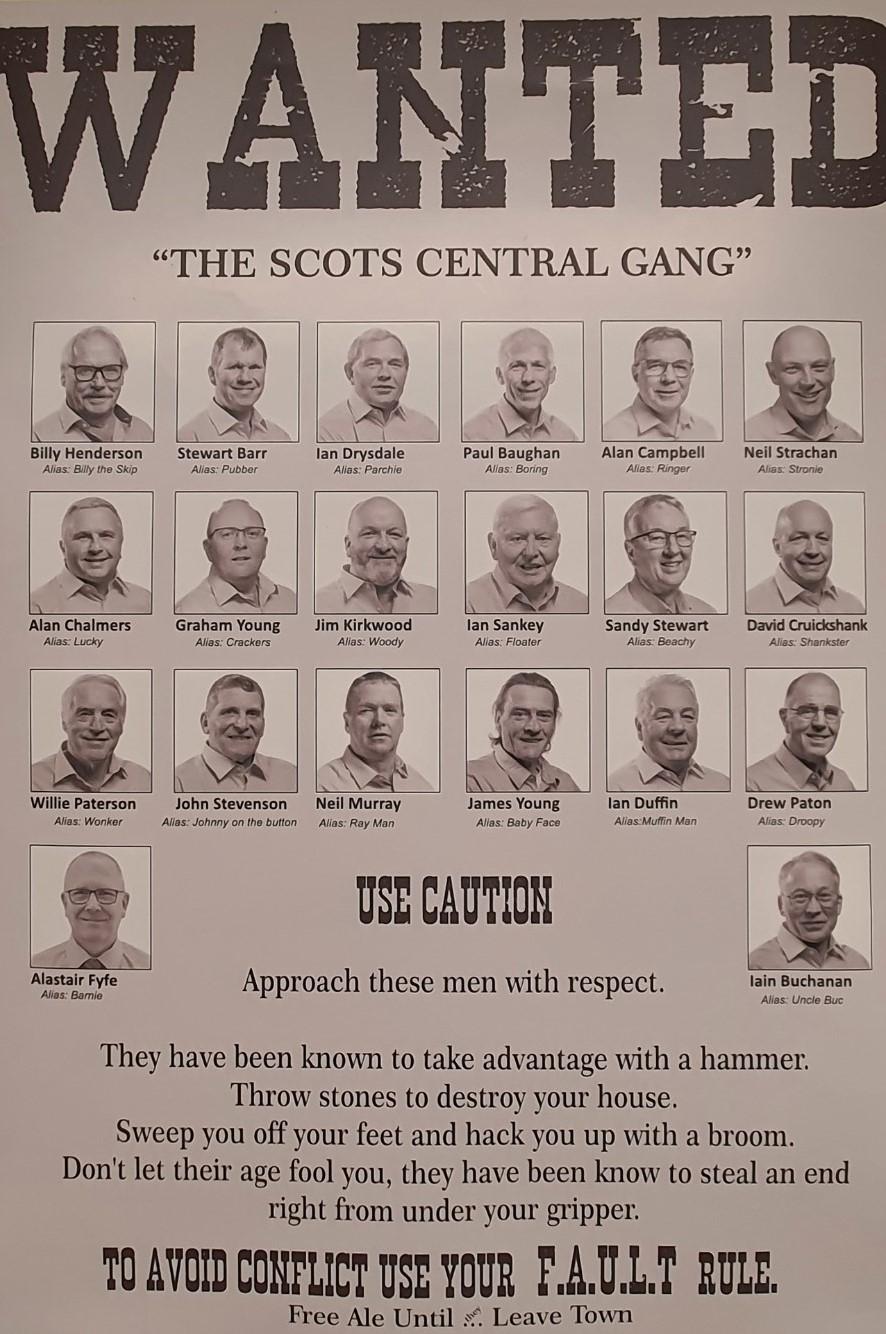
Very personalised, courtesy of Fergus CC. Apparently there was a Barney Fife in a 1960s Canadian TV show.
We played at some very impressive city clubs and some posh country clubs too. These were in Toronto (twice), London, Mississauga, Kingston, Montreal and Ottawa. Surprisingly a couple of the large country clubs rinks also seemed to have an uncertain future because golfers outnumbered curlers and held sway at board meetings when major investment such as ice plant was required. Here at the country clubs our dress code was upped from our “no.2s” (uniform polo shorts and sweaters plus black chinos which were the usual off-ice dress) to no.1s which were RCCC blazer, tie and tartan trews. To be precise, 19 out of our 20 Central tourists wore their no.1s at the first two country clubs – embarrassingly I had left mine hanging in the wardrobe of my hotel room in Edinburgh! Fortunately there was a World Curling Federation board meeting in Toronto a few days after we arrived, and Chris Hamilton, WCF’s head of media kindly brought it out for me. At one country club I returned from playing to find my black shoes were missing – a quick hunt revealed that they were with the attendant being polished up!
To be continued…
